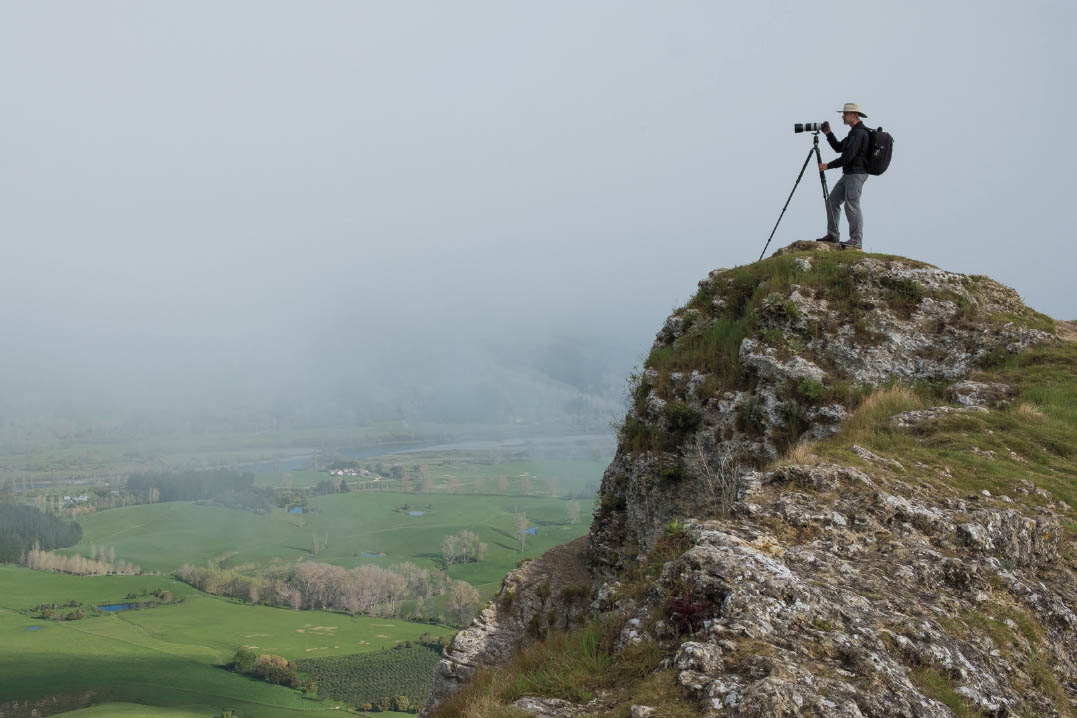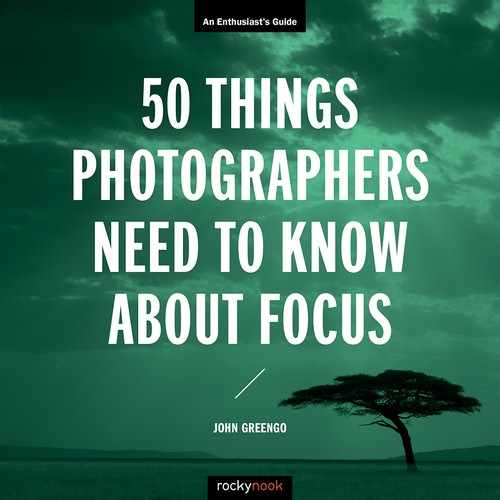48. TRIPODS
![]()
IT’S BEEN CALLED the most important photographic accessory, and for good reason. The tripod is the single most important tool for getting sharp, in-focus photos. Every photographer should own one and not be afraid to use it.
The tripod allows you to shoot photos at any shutter speed and get sharp images, as long as your subject is not moving. This will enable you to capture great depth-of-field images and generate stunning images in extremely low-light conditions. Camera and lens stabilization is handy, but they only go so far; with a tripod, there is no limit to how dark or how slow of a shutter speed you can use and still get sharp images.
Tripods come in all sorts of sizes, shapes, and configurations. New models with new features are always coming out, but a good, solid tripod can remain part of your tool kit for a decade or more. It’s worth your time and money to get one that does a good job and, maybe more importantly, one you like to work with. A common mistake for new photographers is underestimating the importance of this device, and purchasing the cheapest model available. After a few outings with the cheap tripod, they start to realize their mistake.
A quality tripod will hold the weight of your gear at a height that is convenient for you to use in whatever conditions you shoot in. Consider carefully how much weight your tripod needs to support, and check the tripod specifications to see their weight ratings.
The maximum height of your tripod is very important, as well. While there is a special category for tabletop tripods, a standard tripod should come close to your eye-level, or even higher. Many tripods feature a center post for extending the camera to a greater maximum height. Avoid counting on this during your shoots—it can jeopardize stability. Center posts are there only if you absolutely need it. A tripod that is above your eye-line will prove its value the next time you are on stairs, a hillside, or have your camera pointed upward.
The minimum height setting is just as important as the maximum; a camera mounted 4 inches (10cm) off the ground can yield an interesting perspective. Center posts can get in the way when mounted low, so see if there is a provision for removing or replacing it to make low shots possible.
Good technique using a tripod will ensure that your photos are as sharp as they can be. Start by finding a location where all three legs can rest solidly on the ground. Be mindful of leaves, sand, or grass where you may need to push the tripod down so that it settles on firm ground. Be careful of shooting from boardwalks, wooden floors, and decks where vibrations are common. You’ll need to be careful not to move yourself during the exposure.
Remember to turn the stabilization system off if the camera is stationary. If you are simply using the tripod as a platform (for example, when panning), then leave the stabilization on.
With long lenses attached, the center of gravity of your camera gets pushed out in front of the camera body and will cause the whole system to pitch forward. If your lens has a tripod mount option, use it to support the camera closer to the center of gravity. It will hold your camera in a more stable position.
To trigger the shutter, you will want to use a cable release, a self-timer, or a remote trigger. Many cameras now offer Wi-Fi apps that enable you to control the features of the camera from an external device as well as see what is being captured on the device’s monitor.
Tripods aren’t just for low-light conditions. They can be used anytime to help create more precise compositions.
ISO 100; 1/200 sec.; f/13; 420mm (300mm + 1.4x extender); Canon EOS 5D Mark III

A quality tripod will last many years and can improve the quality of your images in many ways.
ISO 200; 1/420 sec.; f/8; 28mm; Fujifilm X-T2; Photo credit: Michelle Mealing

